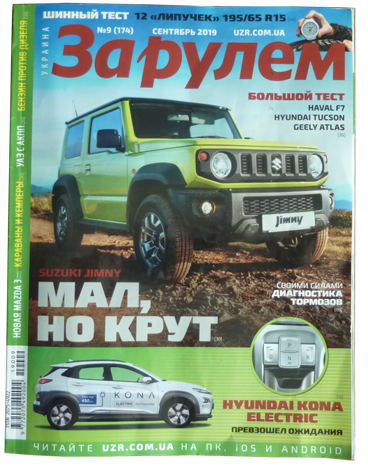e
Pobeda GAZ-M20G
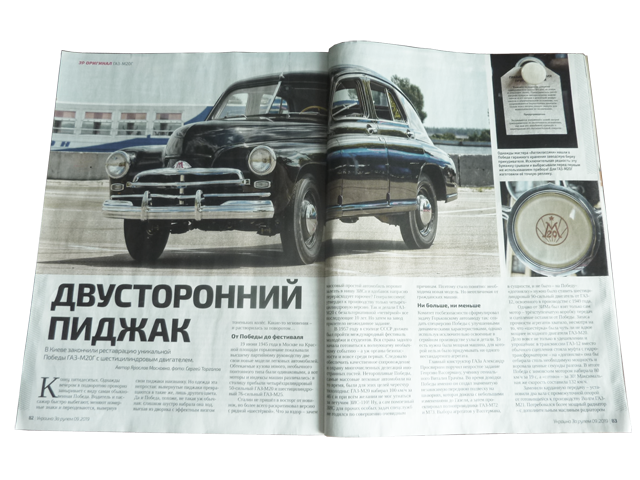
Double-sided jacket.
The restoration of the unique Victory GAZ-M20G with a six-cylinder engine was completed in Kyiv.
The end of the fifties. Once upon a time in the evening the most ordinary Victory quickly dives into the gateway. The driver and passenger quickly run out of it, change license plates and change their clothes, turning their jackets inside out. But their clothes are not simple: twisted jackets turn into the same ones but of a different color. Victory seems to be not so ordinary as well: it developed the speed too fast, leaving the courtyard with a spectacular screech of its thin wheels. After some moments it disappeared around the corner…
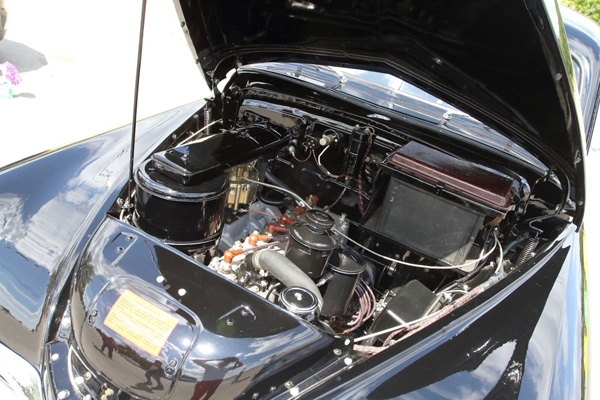
The Gorkovites showed their two new models of cars to the top party leadership since the day of Victory to the festival on June 19, 1945 in Moscow on Red Square. The streamlined bodies of the new unusual pontoon type were the same, but the motors and indices of the cars differed: four-cylinder 50-horsepower GAZ-M20 and six-cylinder 76-horsepower GAZ-M25 arrived to the capital. Stalin was not enthusiastic about the novelties, but most of all he criticized the version with the elegant “six”. What a nonsense! Why a massive simple car strives to get into the niche of ZIS and in addition overspending the fuel in vain? The Generalissimo approved only a four-cylinder version to be produced. So GAZ-M20 with a non-alternative “four” was produced for the next 10 years. But then an unexpected mission was made to come into the factory. In 1957 an international festival of youth and students had to be held in the capital of the USSR. The whole country began to prepare for an exciting unusual event long ago and security agencies were among the first. It was necessary to ensure the high-quality escort and protection of numerous delegations of foreign guests.
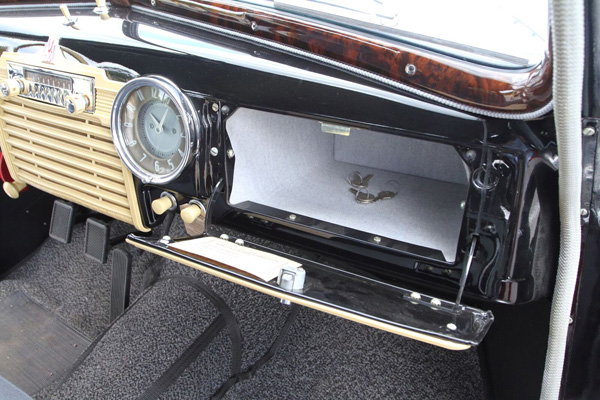
Leisurely Victories - the most popular cars at that time were too slow for these purposes: GAZ-M20 gained 100 km / h for 46 s and with all the desire could not keep up with the flying ZIS-110! Well, the pompous ZIS itself was not suitable for other special tasks of the special services for obvious reasons. Therefore, it became clear: a new model was needed, but indistinguishable from the civilian cars. Neither more, no less the State Security Committee stated the task for the Gorky Automobile Plant like that: to create a special version of Victory with improved dynamic characteristics, however, using components and parts mastered exceptionally in serial production. That is, they needed a powerful vehicle, for the production of which they could not invent any non-standard unit. GAZ head designer Alexander Prosvirnin entrusted a difficult task to Georgiy Wasserman, a student of the genius Vitaliy Grachev. During the refinement of Victory it was he who created the famous independent front suspension on the pivots, which survived with minor changes to Gazelle, after he designed four-wheel drive GAZ-M72 and M73. In fact Wasserman had no selection of units, he had to use a six-cylinder 90-horsepower engine from GAZ-12, mastered in production since 1949 for Victory the “catch-up”. However, only the motor itself was taken from ZIM, the three-speed gearbox and clutch were left from Victory. The margin of strength of the units was enough, despite the fact that “six” was almost twice as powerful as the original GAZ-M20 engine. It was not only a matter of cheapening and simplification: in GAZ-12 transmission, instead of the usual clutch, there was a clutch with torque converter, regarding the “catch-up”, it would take away much-needed power and steal valuable seconds of acceleration.
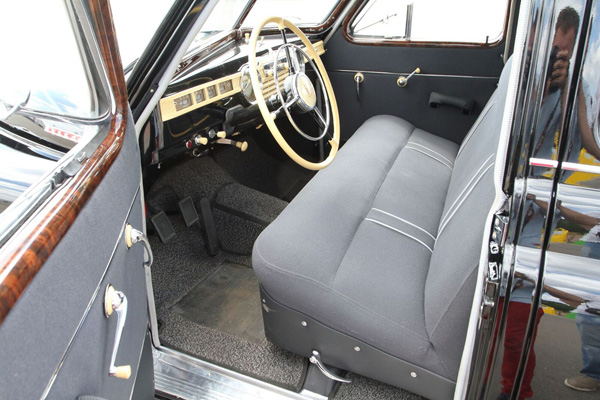
As a result, Victory with ZIM engine gained 80 km / h in 19 s, and “a hundred” in 30! The maximum speed was 132 km / h. The driveline was replaced, two shafts with an intermediate support from Volga being prepared for production GAZ-M21 were installed. A more powerful radiator was needed with an additional oil cooler and an opening between the combs for the crank. The unit without alterations was taken from GAZ-11-73, they remained in the spare parts fund at the plant with a good supply, although the upgraded “M” discontinued in 1947. To avoid drift off of the car with a noticeably heavier front, the front springs from the same new Volga were used providing them with metal spacers. The rear springs are from Wassermann's favorite brainchild GAZ-M72. Despite the instructions of the KGB, one really new part for GAZ M20G - that index was got by the “catch-up” - still had to be made. No matter how they turned around with the layout, no matter how they tried to smash all the units under the hood, the long “six” did not want to fit properly. That is why they had to, albeit not radically, but change the partition of the engine compartment. Well, thanks to the designers: you can now understand thankfully to this detail whether the car was a real “catch-up” or they are trying to present you some artisanal garage creativity under her guise.
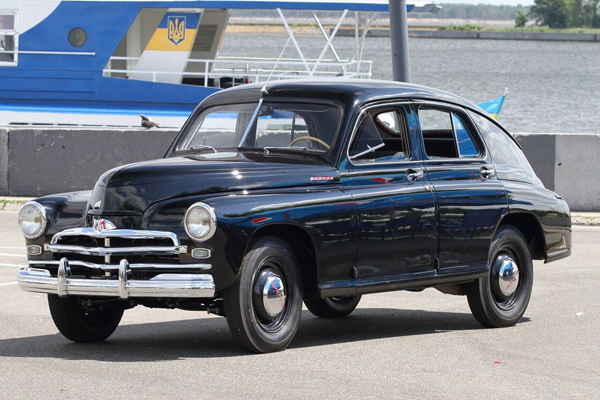
Under cover.
GAZ-M20G became one of the rarest Soviet cars: the plant produced not more than a hundred of such cars in 1956. Approximately 80% of the “catch-up” came to Moscow. However, a number of special vehicles went to the capitals of the republics and even to some regional centers. There were 2-3 GAZ-M20Gs in Kyiv and one car, imagine, settled in Kirovograd: the city was considered an important transport hub, where foreigners often stayed during their travels. Naturally, cars did not stand out from other Victories externally. Regarding the color, for the KGB, in fact, it didn’t matter in which color the car came from the factory: there was a special water-based paint in the arsenal. They were able to “blow a car out” in a different color quickly, and then the paint was just as quickly washed off with warm water under pressure, the intelligence agencies already had analogues of modern “Karcher” in those days! From the first years of production, the usual GAZ-M20, received by the special services, was equipped with ARS-2 radios: bulky lamp equipment was located in a small trunk. There were the simplest radiotelephones that worked through long-wave radio communications in Moscow since 1952, Shabolovskaya TV tower acted as a relay from the switching center.

The binoculars or a night vision device was usually put into the glove compartment of the "catch-up". Tacky bags with interchangeable clothes and a set of license plates were put on the floor near the rear seat. The same clothes with an unusual wrong side were sewn for the KGB in Finland. The legends were spread about the second radiator lining in order to convert the Victory of the third series into the second or vice versa for the quick disguise. But this is fiction: gratings were not interchangeable. By the way, on the GAZ-M20V, the new lining is the “smile” with three wide bars appeared thanks to Wasserman and his GAZ-M72, on which it was necessary to increase the size of the ventilation holes in the grill for better airflow of the radiator. For the logical reasons such trim was introduced on Victories as well. The only difference between GAZ-M20G interior and the usual Victory was the seat upholstery from ZIM – much stronger and more wearproof. In addition GAZ-12 interior was always upholstered with solid fabric, in the mid-50s they began to use leatherette to the utmost for Victory, it was worthless to perspire the backs of special agents all day on a dermantine! GAZ-M20G vehicles were armed with the KGB and were used to escort government columns until 1963, when they began to be replaced by a new generation of cars - Volga GAZ-23 with an engine and an automatic gear from Chaika. Almost all unique Victories have been ruthlessly written off, and today the only surviving and reliable copy of GAZ-M20G is the one that you see on our pages.

From Kyiv to Estonia.
This car was found by the Estonians, creators of the magnificent KGB Museum of the covert means. The museum is preparing a very powerful automobile exposition, for example, there is no less rare GAZ-3113, the last of Gorky's “catch – ups”. The found copy of GAZ-M20G, of course, required a complete restoration, and customers approached to this issue very reverently. Specialists capable of performing the work at the proper level were searched literally throughout the former Soviet Union and eventually they were found in the Kyiv workshop "Autoclassic". Estonian experts helped our restorers to recreate the vehicle in the maximum technical reliability, advising them in the smallest nuances in detail.
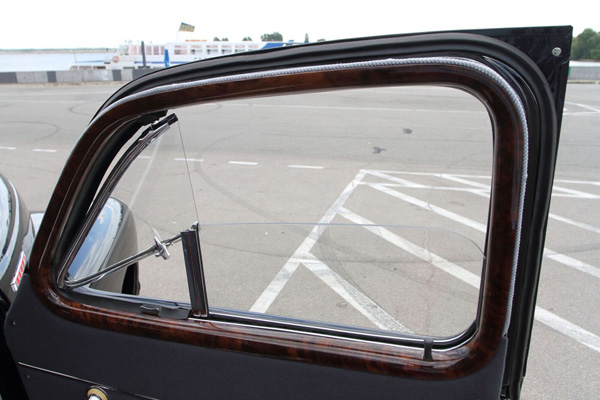
Even a rare K-21 dual carburetor was installed on the vehicle, it was installed on GAZ-12 engine from the factory, but it was usually changed in operation due to the unusual capriciousness, for example, to a unit from GAZ-51. A couple of liberties were allowed in the appearance. The black color is the wish of the museum, the car looks really spectacular, but the factory never painted Victory in such a color. Moreover, the internal covers of windows: in the original they were metal and using special technology painted like a wood, the texture turned out to be really indistinguishable from the real wood. Surprisingly, but after 75 years, it turned out to be simply impossible to repeat this technology with modern means - they had to order the covers from the ebonist, the suitable maple solid was sent from Canada according to the drawing. The result is a wonderful copy of a unique retro car, in all likelihood, the only one in the world. At the time of publication GAZ-M20G was already in Estonia, the car passed a detailed assessment from the international experts who confirmed the highest level and the reliability of the restoration work of Kyiv specialists.
